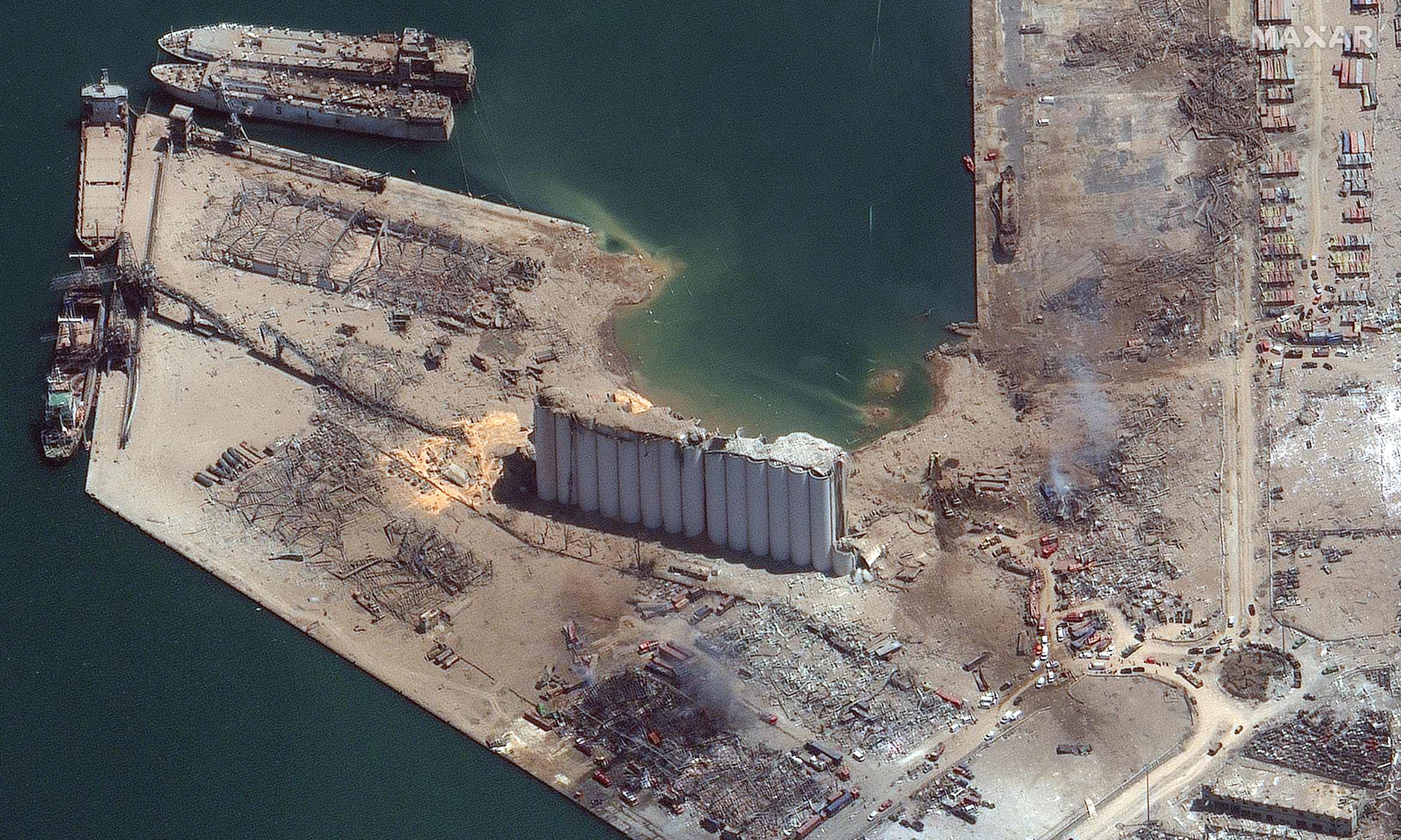On August 4, 2020, a major explosion devastated the city of Beirut, Lebanon. The Prime Minister said the cause of the explosion was 2,750 metric tons of ammonium nitrate, a common industrial chemical used in fertilizer and as a component in mining explosives. As of August 5, at least 135 people have been killed and around 5,000 people injured; another 300,000+ people are displaced due to the extent of the damages. With electricity out in most of the city, emergency workers are limited in what they can do. The government’s minister of information stated the country would be entering a two-week state of emergency.
When crises like this occur, Maxar is committed to supporting the humanitarian community by providing critical and actionable information to assist response efforts and fulfilling our purpose, For a Better World. As part of our Open Data Program, Maxar will publicly release data of the affected areas to support response efforts as it becomes available.
Any imagery or data distributed through the Open Data Program is licensed under the Creative Commons Attribution Non-Commercial 4.0 license (CC BY-NC 4.0). This licensing allows for non-commercial use of the information, meaning it can quickly be integrated into first responder workflows with organizations like Team Rubicon, the Red Cross and other non-profits. If commercial companies are interested in using the data distributed through the Open Data Program, it can be purchased by contacting us here.
Imagery has been posted on our Open Data Program website. Please continue to check this site and our social media channels for updates on additional post-event data.
August 10, 2020 Update:
New vector data from Ecopia.AI has been added to this Open Data Program activation. The vectors layers, including height-attributed building footprints and road centerlines, were extracted from new Maxar satellite imagery using Ecopia.AI’s proprietary artificial intelligence algorithms. The before and after basemaps that these vectors were extracted from are also included; it’s about a one square mile around the explosion site.

Site of the explosion that happened on August 4, 2020 in Beirut, Lebanon.